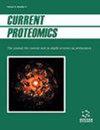Characterization of proteins from putative human DNA and RNA viruses.
IF 0.5
4区 生物学
Q4 BIOCHEMICAL RESEARCH METHODS
引用次数: 0
Abstract
In the vast variety of viruses known, there is a particular interest in those transmitted to humans and whose ability to disseminate represents a significant public health issue. The present study’s objective is to bioinformatically characterize the proteins of the two main divisions of viruses, RNA-viruses and DNA-viruses. In this work, a set of in-house computational programs was used to calculate the polarity/charge profiles and intrinsic disorder predisposition profiles of the proteins of several groups of viruses representing both types extracted from UniProt database. The efficiency of these computational programs was statistically verified. It was found that the polarity/charge profile of the proteins is, in most cases, an efficient discriminant that allows the re-creation of the taxonomy known for both viral groups. Additionally, the entire set of "reviewed" proteins in UniProt database was analyzed to find proteins with the polarity/charge profiles similar to those obtained for each viral group. This search revealed a substantial number of proteins with such polarity-charge profiles. Polarity/charge profile represents a physicochemical metric, which is easy to calculate, and which can be used to effectively identify viral groups from their protein sequences.推定的人类DNA和RNA病毒的蛋白质特性。
在已知的种类繁多的病毒中,人们对那些传播给人类的病毒特别感兴趣,它们的传播能力是一个重大的公共卫生问题。本研究的目的是对病毒的两种主要分裂,rna病毒和dna病毒的蛋白质进行生物信息学表征。在这项工作中,我们使用了一套内部计算程序来计算从UniProt数据库中提取的代表两种类型的几组病毒的蛋白质的极性/电荷谱和内在无序易感性谱。这些计算程序的效率得到了统计验证。研究发现,在大多数情况下,蛋白质的极性/电荷谱是一种有效的判别方法,可以重新创建已知的两种病毒组的分类。此外,对UniProt数据库中“审查”的全部蛋白质进行分析,以找到与每个病毒组获得的蛋白质具有相似极性/电荷谱的蛋白质。这项研究揭示了大量具有这种极性电荷谱的蛋白质。极性/电荷谱是一种易于计算的理化指标,可用于从蛋白质序列中有效识别病毒群。
本文章由计算机程序翻译,如有差异,请以英文原文为准。
求助全文
约1分钟内获得全文
求助全文
来源期刊

Current Proteomics
BIOCHEMICAL RESEARCH METHODS-BIOCHEMISTRY & MOLECULAR BIOLOGY
CiteScore
1.60
自引率
0.00%
发文量
25
审稿时长
>0 weeks
期刊介绍:
Research in the emerging field of proteomics is growing at an extremely rapid rate. The principal aim of Current Proteomics is to publish well-timed in-depth/mini review articles in this fast-expanding area on topics relevant and significant to the development of proteomics. Current Proteomics is an essential journal for everyone involved in proteomics and related fields in both academia and industry.
Current Proteomics publishes in-depth/mini review articles in all aspects of the fast-expanding field of proteomics. All areas of proteomics are covered together with the methodology, software, databases, technological advances and applications of proteomics, including functional proteomics. Diverse technologies covered include but are not limited to:
Protein separation and characterization techniques
2-D gel electrophoresis and image analysis
Techniques for protein expression profiling including mass spectrometry-based methods and algorithms for correlative database searching
Determination of co-translational and post- translational modification of proteins
Protein/peptide microarrays
Biomolecular interaction analysis
Analysis of protein complexes
Yeast two-hybrid projects
Protein-protein interaction (protein interactome) pathways and cell signaling networks
Systems biology
Proteome informatics (bioinformatics)
Knowledge integration and management tools
High-throughput protein structural studies (using mass spectrometry, nuclear magnetic resonance and X-ray crystallography)
High-throughput computational methods for protein 3-D structure as well as function determination
Robotics, nanotechnology, and microfluidics.
 求助内容:
求助内容: 应助结果提醒方式:
应助结果提醒方式:


